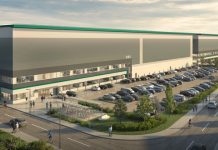By David Kinnaird, Chief Customer Officer, of essensys
As lockdown restrictions continue to ease, business leaders are placing an increasingly sharp focus on what a return to the office will look like. Of course, there is no right or wrong answer to this conundrum, and no rule book to turn to; it is though pretty clear that for the most part it will be personal choice coupled with mild corporate coercion that guides us all back to our offices.
However, what is more black and white is the role that technology can play in ensuring safe workspaces. Sensors, access control, booking systems, and similar technology can give business leaders a holistic view of workspaces, and of course you as landlords,in terms of how many people are occupying office space at any one time, in what areas and where people plan to be stationed throughout the working week. With this information staff numbers can be controlled and monitored, to ensure that social distancing guidelines are adhered to, and any spaces in use are ‘safe’.
The ultimate goal is to create workspaces that people feel comfortable returning to, foster productivity and innovation, and help employers fulfil their moral and legal obligations to their employees. And, as we look into the near future at the signs of an economic recovery, we must build environments that support growing and vibrant companies.
For you as landlords,, this is both an opportunity and a threat if you don’t react. Research from global tech services company NTT’s 2020 Intelligent Workplace Report highlights how 89% of organisations see outstanding occupier experience as a crucial differentiator, yet only 38% of landlords are satisfied with their capability to deliver these experiences. In addition, our own research, undertaken with independent research and advisory firm Verdantix, found that almost half (46%) of occupiers believe access to higher quality technology is a key driver of flexible space offerings, while tenants are willing to pay a premium of 20% for technology enabled workspaces.
Creating a safe and practical space
The days of the static, traditional office space are over. Occupiers want spaces that have the flexibility and adaptability to meet their changing needs over time. The pandemic has shown how quickly this can change. With safety such a key priority, there’s been an increase in demand for short-term flexible space for single tenant use. But, where individual spaces are not possible, there’s an increased demand for frictionless experiences.
People want the ease of booking and accessing space and moving from one workspace to another, with all the infrastructure in place behind it to not only ensure the space is clean, but that the technology experience is seamless as well. They want to open their laptop at home, HQ or a flex-space without multiple logins or having to worry about security, privacy or data issues so they can get to work and stay productive. However, from our own research, we know there is a disparity between the views of landlords and tenants when it comes to digital security. Only a third of occupiers feel digital security is fully supported in their flexible spaces, with 44% of landlords admitting it’s not a current priority for them.
Flexible office space is taking up an ever-increasing percentage of the portfolios of leading landlords, which is now becoming part of their strategic plans. It’s clear that the world of work has changed forever, and while there are many grey areas to overcome, technology holds the key to ensure safe and future-ready workspaces that deliver outstanding experiences. So, what technology do you need to put in place to support these new ways of working for occupiers?
The right tech to support our new ways of working
In the post-Covid world, coming to the office needs to be worth the commute, and offer value over the home office environment. To bring people back to their offices, you need to give occupiers a compelling in-building experience.
Fundamental to this is ensuring the spaces have the right technology and digital infrastructure in place to meet a wide range of tech requirements. I want to be clear, however, that technology here is not the goal; delivering exceptional employee experiences is. It’s through this lens of experience that technology should be considered.
With this in mind, here are four key pillars of considerations that a space’s tech stack must address to deliver on these requirements. Consider it a tick-list of questions to help you hone your stack:
- Tenant Engagement: Do occupiers feel well connected to their space and with those operating it? Do they feel they have control of their space where needed, within a built environment? Do they have a means of communicating with those who operate and co-habit their space so that they feel supported, connected, and listened to?
- Value Added Occupier Services: Do occupiers have frictionless experiences when it comes to requiring office functionality such as print, private networks, video conferencing, paying for space and amenities usage, and voice calls? Are you doing all you can to make their day-to-day easy? Have you made it simple and easy for occupier organisations to do business with you?
- Amenity & Space Management: Can occupiers quickly identify and book different types of space based on the kind of work they want to conduct? It could be a meeting room, conference room with AV, informal spaces for catching up, or a quieter space for when there’s a tight deadline to hit. Is the process behind this system secure, and does it ensure that only those who have the right to access your space can access it? Can necessary changes to access control be made instantly? And can your infrastructure manage access across multiple located offices, to support hybrid and distributed working models?
- IT & Network Infrastructure: Are you able to ensure all physical, network, and cybersecurity concerns are addressed and proactively monitored? Do occupiers have access to high performance technology capabilities and their own private networks?
Your tech stack should be a direct consequence of your goal to deliver outstanding occupier experiences and is as important as the fixtures, fittings and physical safety equipment such as a fire extinguisher or fire alarm. Don’t be tempted to pull a readymade, one size fits all tech stack off the shelf in the hope that it’ll ‘do’, or at least match the services provided by your competitors. It’s critical to make the right technology decisions from day one to ensure the proposition can meet the occupiers’ technical specifications today and in the long term.
The future may still be uncertain, but one thing is for sure, we will return to our offices and cities. And we’ll expect more of the spaces we work in when we do. The landlords that provision for this now and create experience-centric spaces will prosper. Those that hope for a return to the way it was before will be left with unoccupied square footage. The time to react, prepare and seize the initiative is now, before your competitors get there first.




















